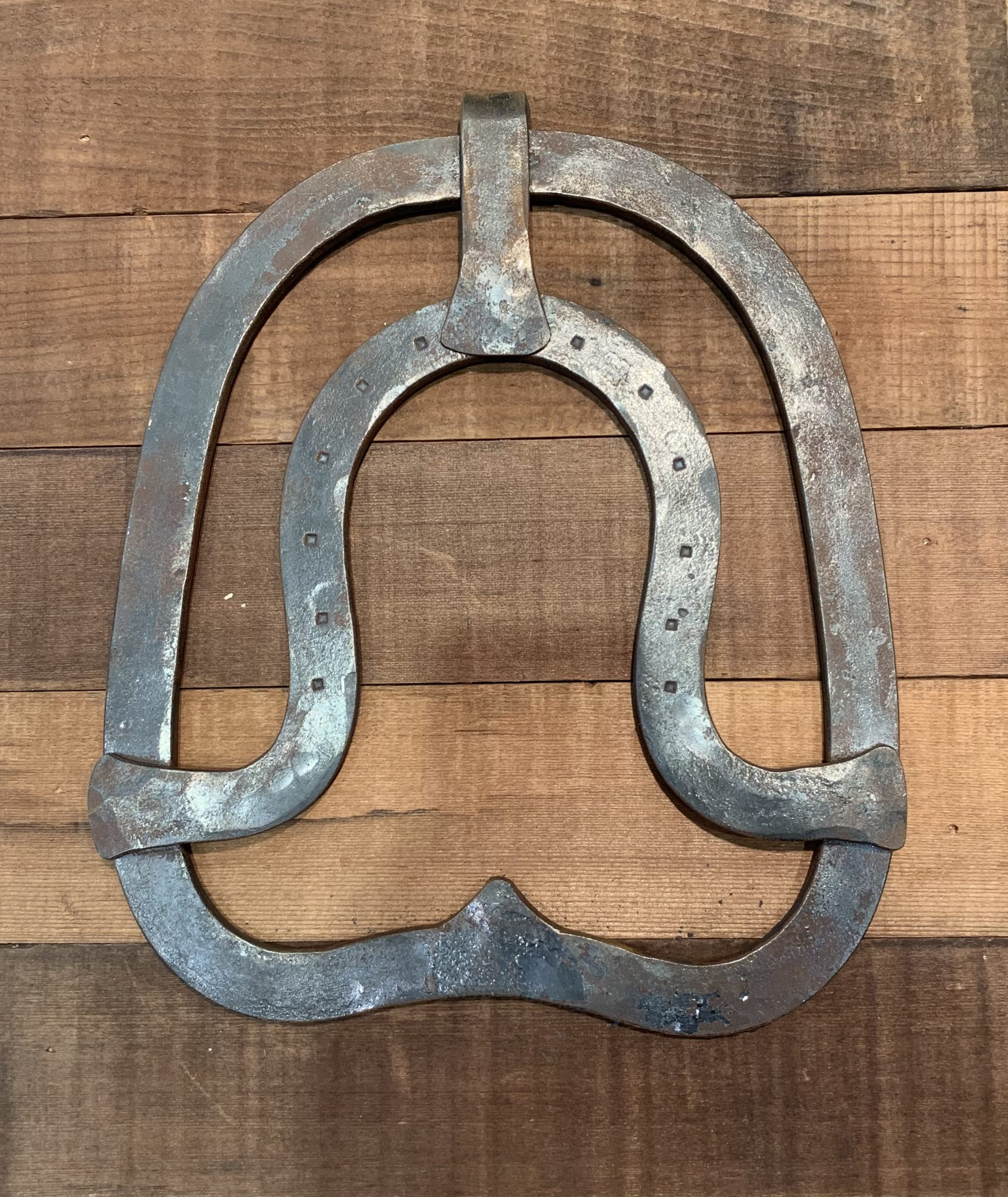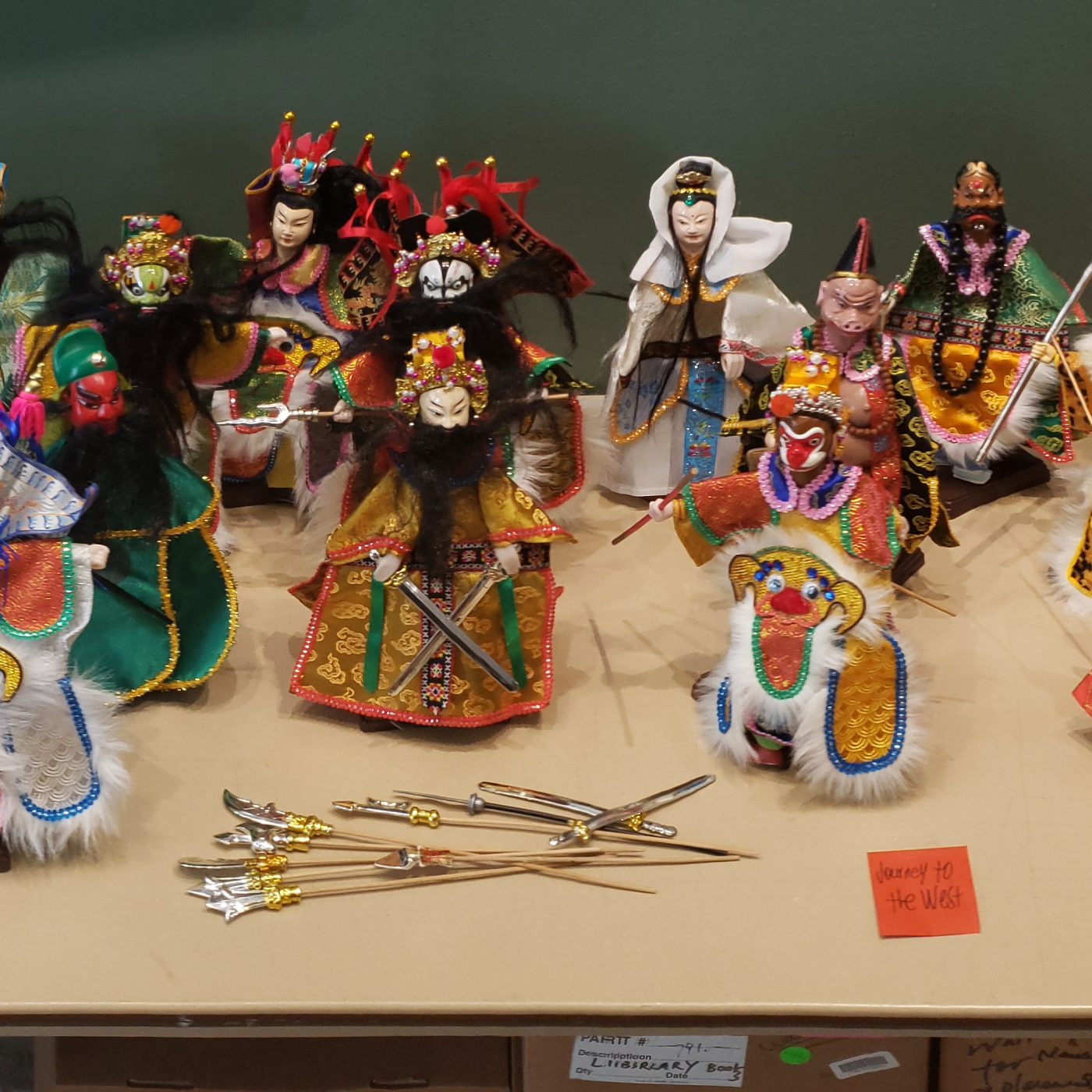For this week’s highlight, we feature an item called a tule horseshoe, generously donated by the Locke Foundation. This item is an oversized horseshoe that served as a significant tool in the agricultural development of the marshy delta regions of California. The object measures 13 by 11.5, a significant step up from a standard horseshoe, which would roughly fit the center half ring.
The original Tule Horseshoe was discovered in 1942. Based on the archival photo, Locke Foundation had the artifacts crafted by a local ironwork artisan Patrick Daniel. The horseshoe is an object uniquely from the California Delta and it is uniquely Chinese within the historical context of the delta’s development. The Chinese were key in the creation of the California Delta, which became and still is one of the richest and most prolific agricultural lands in the world.
From the start of the Gold Rush in 1848, the Sacramento River was the main thoroughfare for gold miners to travel upriver from San Francisco to Sacramento. It was then that early Californian settlers recognized the agricultural potential of the Sacramento River Delta’s rich peat soils. However, like all marshlands, significant work was necessary to transform the region into arable land. Numerous drainage canals and levees would have to be built to begin settling the area for farming. The wet marshy environment of the river delta was extremely difficult to work in and had many dangers, such as mosquitoes that carried diseases like malaria and meningitis. Nevertheless, the early settlers were determined to make the area into a thriving agricultural environment.
After the completion of the Transcontinental Railroad in 1869, delta landowners were able to recruit the veteran Chinese railroad workers for the massive project of draining and controlling the Sacramento River Delta. Thousands of Chinese workers started on the laborious task of taming the delta using just wheelbarrows, shovels, and picks. As horses were brought in to assist with the effort, however, the soft muck of the delta hampered their movement. Horses would often sink due to their weight, which in turn caused them to panic and potentially injure themselves or nearby workers.
To resolve the sinking problem, Chinese workers developed the Tule horseshoe. The exact origin of the name is not explicitly clear, but it might have been named after the plant matter that it was designed to trample over the Hardstem Bulrush. The Hardstem Bulrush, also known as Tule, is a plant native to freshwater marshes in North America and it flourished in the California delta. The shoe is designed to have an additional iron ring attached to the standard horseshoe, thereby giving it a larger surface area to allow a horse to maneuver better on peat soil, following the same principles as snowshoes for humans.
As the levees rose and canals drained the water, the Sacramento River Delta became a vast agricultural region that generated enormous wealth for the state. Some have called the rise of agriculture in California the “second Gold Rush”. The levee laborers had subsequently settled in the Delta and practiced farming, and many of them went on to found the town of Locke. Locke, formerly known as Lockeport, is a historic Chinese town established in 1915 by a group of Chungshan/Zhongshan people following a devastating fire in nearby Walnut Grove. The town was named Locke/Lockeport after the family that leased the Chinese a plot of land a mile north of Walnut Grove to found the Chinese settlement. The land that Locke was founded in had to be leased because California’s 1913 Alien Land Act forbade Chinese peoples from owning land in the state. Coincidentally, Locke in Chinese rhymes with happy living and now it serves as a symbol of continuous Chinese presence in the California Delta for 150 years. In 1970, Locke was listed on the National Register of Historic Places by the National Park Service.

Tule Horseshoe! Courtesy of the Locke Foundation, Museum of Chinese in America (MOCA) Collection.

